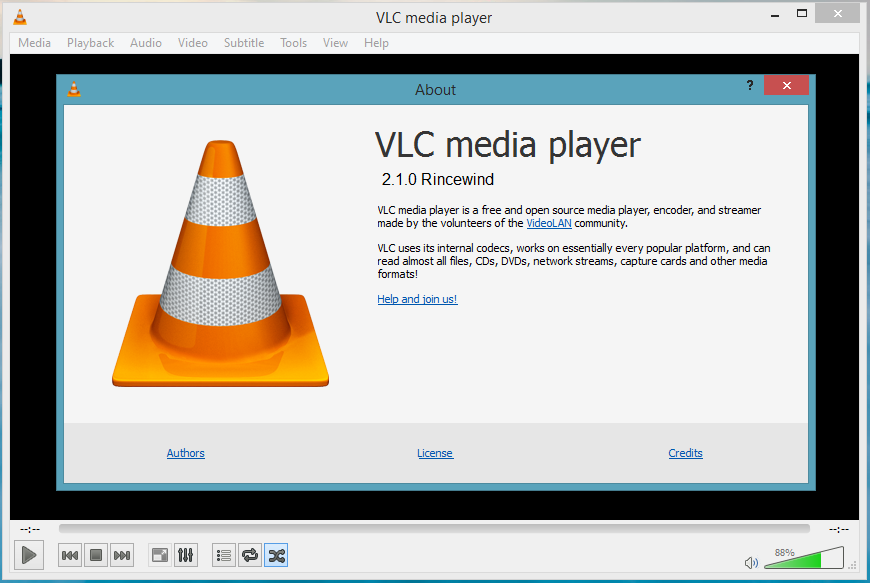| This page describes how to make a thumbnail. | Other 'how to' pages |
- 1How to create a thumbnail from a video
How to create a thumbnail from a video
Vlc Player For Mac Os
With new VLC versions (VLC 1.1.0 and above), the thumbnails are generated with scene video filter
The VLC media player is an open-source multimedia platform which is available in Operating system as well as in mobile such as iOS, Windows 10, Android, Linux and more. It was developed by the VideoLAN project in February (2001). VLC Player is a powerful, fast, and free open-source media player for Mac and Windows. Window’s media player can do this by prompting you to set it to default instead of VLC every time it is opened. Whatever the case, in this tutorial, we will show you how to make the latest version of VLC your default media player in Windows, Android, Mac, every platform. Setting VLC as the Default Player (Windows) 1. You could try going into your applications folder, then making some duplicates of the VLC player app, so you have VLC player, VLC player 2, VLC player 3 etc. Then you can right click on a video.
If you want to get rid of the sound you can add '--aout=dummy' next to '--vout=dummy'.
For older VLC versions (1.0.0 and below) the same can be done with image output module
What it does:
When VLC media player runs it 'plays' the video for one second without actually showing the video on screen, and then quits, leaving us with a file named 'snap000000.jpg', containing an image of the first frame of the video.
How it works:
First select the image output with: -V image or --vout image.
Next set the interval (in seconds) you want an image from with: --start-time 0 --stop-time 1In my example the first second of the video. In that case you could omit the parameter --start-time. If you want an image from the 5th second fill in: --start-time 5 --stop-time 6
The image format will be .jpg because i provided: --image-out-format jpg. You could specify --image-out-format png to get a .png-image instead.

--image-out-ratio 24 specifies we want one image out of 24. In my case the video contains 24 images per second so this is the right value. If your video has more images per seconds you should increase this value to prevend you get more images as one. If the number is too high (for example 500) it still produces only one image, so the actual value is not so important as long as it is higher then the images per second.
--image-out-prefix snap specifies the filename must start with 'snap'. You can prefix with a path, for example c:snap and resulting images will be created there.
You can specify --image-out-replace. In that case Vlc produces the file 'snap.jpg'. This will prevent VLC from creating multiple images.
Download Vlc Media Player For Mac
test.mpg specifies the video to play and finally vlc://quit forces vlc to quit when ready.
Creating a contact sheet
Although VLC does not provide an option for creating a contact sheet, one possible solution is to use the ImageMagick 'montage' tool. Taking the images generated by VLC, run the following command:
For more on the tool you can check the associated montage help page.

